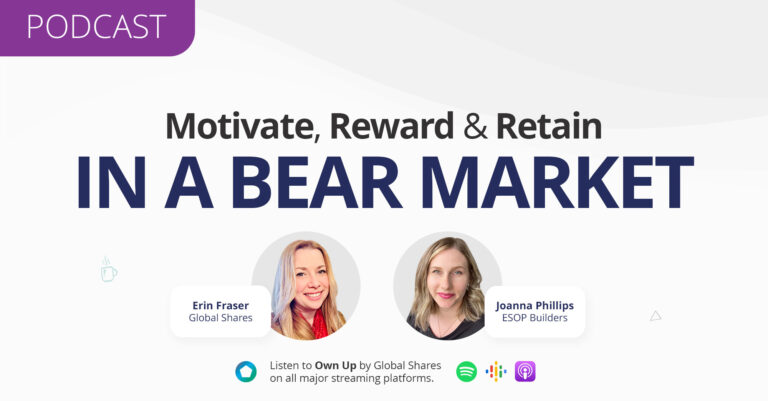ESPP: Is it worth it for employers and employees?
Employers are looking at ways to attract, retain and reward top-quality staff, while employees are seeking out companies that value and appreciate them. One common approach, that has been used by US firms, is through employee stock purchase plans (ESPPs).
In this article, we’ll spell out the pros and cons of ESPPs for both employers and employees.
What is an ESPP?
An ESPP is a way for employees to purchase company stock via payroll deductions, sometimes at a reduced price. The discount allowed is normally between 5 and 15% of the stock price on either the first day or the last day of the offer period. The accumulated contributions are then used to buy company shares at the purchase date.
With two types of ESPP to choose from, Qualified and Non-Qualified, you can determine what solution works best for you and your employees. A qualified plan is treated more favorably on taxation but there is more flexibility in how a non-qualified plan can be designed. Check out our ‘’Qualified & Non-Qualified ESPPs’’ article.

What are the ESPP pros and cons for employers?
Benefits of ESPP for employers
- Improve your recruitment process
An ESPP can potentially build an individual financial wealth, which makes your company more attractive when bringing top talent on board. It could help to land that ideal candidate by giving them something no one else can offer – a stake in your company. - Boost employee retention
ESPP programs typically run over a number of years, meaning participating employees must remain in place for a specified time before they can access the assets. It not only gets people onside, it keeps them there. Employees who are financially involved in a company’s performance are more likely to stay for the long haul. - Increase team productivity
Since the value of the ESPP shares is linked to your company’s stock price, employees tend to work harder and be more productive as their performance can impact how much they can earn. - Create an ownership culture
Participating employees are not just employees, they’re employee-owners. Allowing staff to invest in your company is a great way to show them they’re part of something. This can be a truly powerful motivator. - Help younger employees achieve financial security
An ESPP is a broad-based stock plan that can be made available to all employees. Unlike other types of equity compensation (e.g. restricted stock units) that are usually given to executives, this stock plan can be an invaluable financial tool for younger generations. - Tackle the gender pay gap
Equity compensation is measurable. You can use the participation data to determine if there are underlying issues, such as gender pay disparity. This information can be used to develop proactive actions, thereby making your organization a better, fairer and more equal place to work, for everyone. - Offer plan design flexibility
You can design a plan that aligns with your business goals, ranging from the plan type (qualified vs nonqualified ESPP), plan discount, offering period, ESPP eligibility (you are allowed to exclude new joiners and part-time employees) etc. With nonqualified plans, you can even offer a lot more flexibility including a plan discount beyond 15%, matching shares and plan features that exceed what is permissible under Section 423. - Allow for easier ESPP administration
With qualified plans, since no income or social tax withholding is required by the company on the ordinary income, it may reduce the workload of your stock plan administrators. 83% of public companies that offer an ESPP grant their employees a qualified ESPP according to a 2022 ESPP data survey. - Qualify for a corporate tax reduction
When your employees purchase stock under a non-qualified plan, a corporate tax reduction normally may be claimed for the ordinary income recognized by the employee. You, as an employer, can also be entitled to a corporate tax reduction upon a disqualifying disposition under a qualified plan.
Cons of ESPP for employers
Despite a number of benefits offered by ESPPs, there will be an additional spend, such as legal and administrative costs, plus any employer’s contribution.
You’ll also need to pay attention to compliance, tax, accounting etc. If you expand your plan outside of the US, there will be an extra workload on your team.
Running an ESPP requires a specialized skill set. It’s not something you’ll want to manage on a spreadsheet in-house. That’s why you’re better off getting professional help. At Global Shares, with our award-winning software platform and a team of over 300 equity professionals, we can cover everything, from participant enrolment to trading and compliance.
Get in touch to find out how we can assist with your ESPP administration solution.
What are the ESPP pros and cons for employees?
ESPP benefits for employees
- Financial award
ESPPs offer an easy, cost-efficient way to pursue a disciplined savings plan. Since you’re buying stock for a discount, you have the potential to earn money with this ‘buy low, sell high’ approach. Based on the same survey, 71% of qualified ESPP plans offer a 15% discount.When companies offer enhanced features such as a lookback provision, you can get a further savings boost because the company discount is applied to the lower of either the price at the start of the offering period or at the purchase date. So, lookback provides a buffer against market volatility, which can be important to risk-averse employees.
- Preferential tax treatment
If your company offers qualified ESPP, you can probably enjoy some tax benefits meaning you won’t need to pay tax until you sell your ESPP shares. When you sell your ESPP shares, ordinary income and long-term capital gain/loss will be recognized. - Ease of access
Payments are collected directly via payroll. You just decide how much you wish to contribute and these deductions will be used to purchase shares on your behalf at the end of the purchase period (i.e. purchase date). - Flexibility
There’s no obligation to partake as participation is voluntary. Companies commonly allow you to withdraw, even during a purchase period.
Cons of ESPP for employees
There are certain restrictions, including a cap on contributions and a cut-off for stock value purchases during each calendar year.
If you’re offered a qualified ESPP, the tax implications could be complicated as there are two classifications of sales for qualified ESPPs: qualifying and disqualifying dispositions.
Returns are not guaranteed and the share price may fall as well as increase. There could also be a currency risk involved.
Get in touch
To learn why we’re the chosen and trusted ESPP administrator for hundreds of companies across a range of industries, in more than 100 countries worldwide, set up a call with one of our advisors today.
By visiting a third-party site, you may be entering an unsecured website that may have a different privacy policy and security practices from J.P. Morgan standards. J.P. Morgan is not responsible for, and does not control, endorse or guarantee, any aspect of any linked third-party site. J.P. Morgan accepts no direct or consequential losses arising from the use of such sites.











